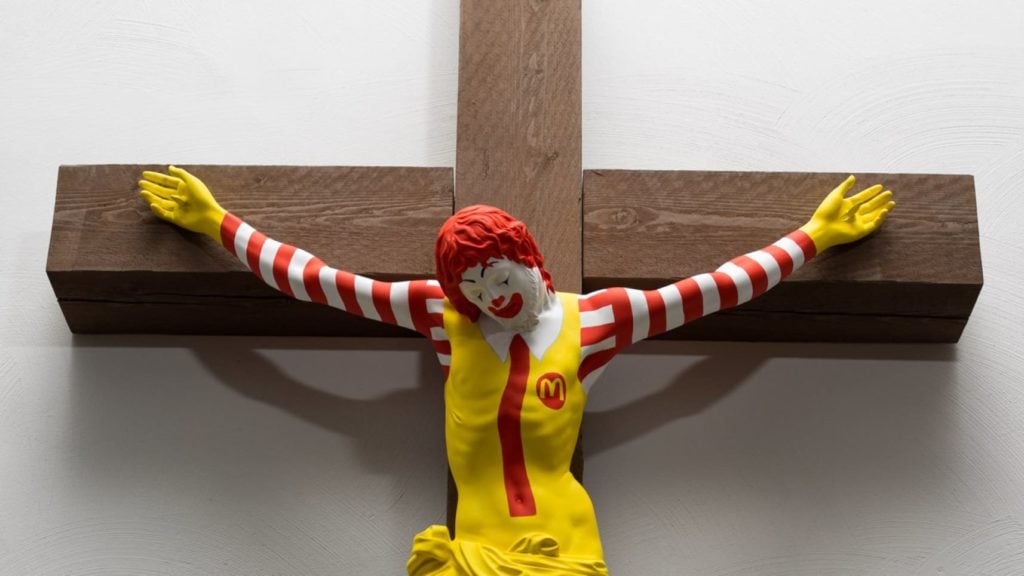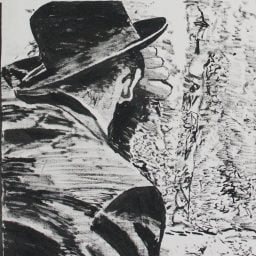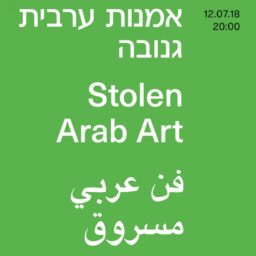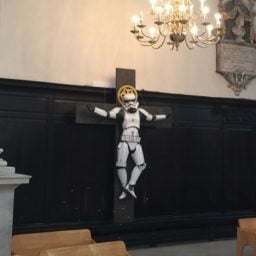Protests over McJesus, a sculpture of a crucified Ronald McDonald by Finnish artist Jani Leinonen, turned violent on Friday night at Israel’s Haifa Museum of Art, where someone firebombed the museum.
“We denounce the exhibition and the injury to the holiest symbol of Christianity by an institution that is supposed to serve citizens of all religions,” the Rev. Archimandrite Agapious Abu Sa’ada of the Greek Melkite Catholic Archeparchy of Acre told Haaretz.
Hundreds of Arab Christians were on hand Friday to protest the controversial work, while police mobilized to prevent them from entering the museum and removing the work by force. Three policemen were injured by protesters throwing stones, while officers Officers, meanwhile, used tear gas and stun grenades to clear the crowd, according to the Independent. At least one man has reportedly been arrested.
The demonstration followed a letter on Thursday from Israeli culture minister Miri Regev calling for the work to be removed and threatening to revoke the museum’s government funding.
“Disrespect of religious symbols sacred to many worshipers in the world as an act of artistic protest is illegitimate and cannot serve as art at a cultural institution supported by state funds,” Regev wrote, citing the numerous complaints she had received from the local Christian community, according to the Times of Israel.
“The minister’s threat to withdraw government support for the museum is baseless,” the Association for Civil Rights in Israel wrote in a letter to deputy attorney general Dina Zilber, obtained by Haaretz. “The Budget Foundation Law does not include even the vaguest clause about prohibiting offensive content due to religious reasons.” An op-ed in the paper decried Regev’s missive as a call to censorship.
McJesus was installed in September as part of the exhibition “Sacred Good,” which looks at religion and faith through the lens of consumerism. The museum describes the piece as a way to “address the collaboration between religious systems and the consumer culture.”
Leinonen is known for using corporate imagery and mascots in his work, which often critiques capitalism. He was one of the artists featured in Banksy’s dystopian theme park Dismaland in 2015, with a display of subversive cereal boxes parodying the likes of Kellogg’s Corn Flakes and Rice Crispies, and which collectively read “Your Dreams Are My Nightmares.”
So far, the museum has refused to take the work off display, instead meeting with church leaders and officials from the Haifa Municipality and determining that the most appropriate response to is to hang a sign at the exhibition entrance warning visitors of potentially offensive content.
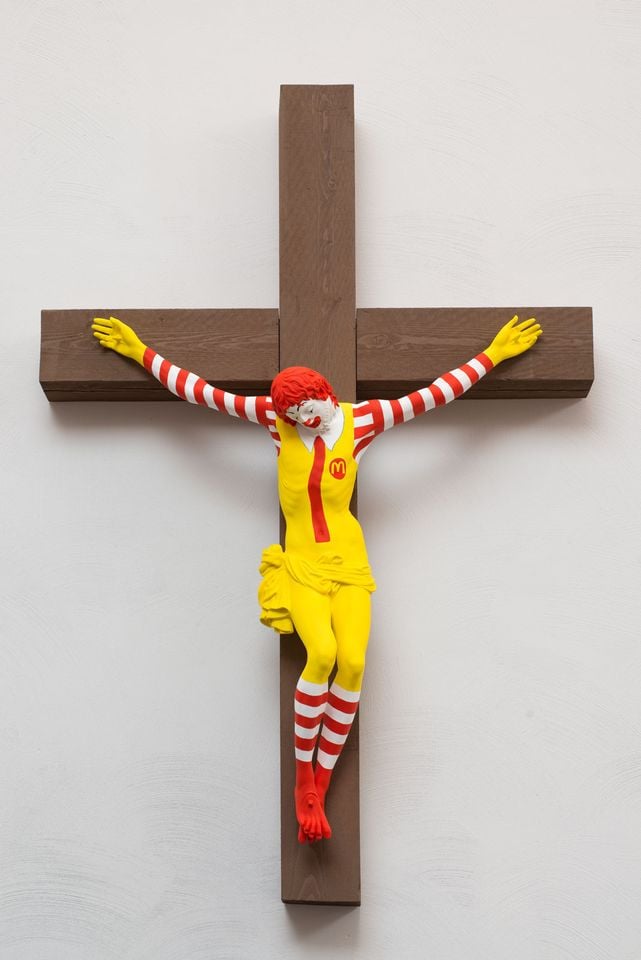
Jani Leinonen, McJesus (2015). The controversial work has become the subject of violent protests at Israel’s Haifa Museum of Art. Photo by Vilhelm Sjöström, courtesy of the artist and Zetterberg Gallery.
It turns out, the Christian protesters aren’t the only ones seeking the removal of the work. Leinonen himself actually requested the museum take it down back in September as part of the Boycott, Divestment, and Sanctions movement that supports Palestinians rights in the face of encroaching Israeli settlements and occupation.
“I joined the Boycott, Divestment and Sanctions (BDS) movement, that upholds the simple principle that Palestinians are entitled to the same rights as the rest of humanity,” Leinonen told the Jerusalem Post. “Israel overtly uses culture as a form of propaganda to whitewash or justify its regime of occupation, settler-colonialism and apartheid over the Palestinian people. Therefore I do not wish to be part of this exhibition.”
Leinonen said he asked “Sacred Goods” curator Shaked Shamir to take McJesus down and “assumed” it already had been, he told the Art Newspaper. “The news about the demonstrations came to me as an upsetting surprise particularly because my work is in the exhibition against my wishes.”
The artist has since reiterated his calls for the piece to be removed from the show, but said he has not heard back from museum leadership regarding the issue.
As of press time, neither Leinonen nor the Haifa Museum responded to artnet News’s request for comment. A spokesperson for the Haifa Museum told the Post that they have encountered a growing number of artists who wish to join the boycotts against Israel in recent years. But that the institution continues to work “with dedication against attempts such as these so that Israelis who appreciate art will continue to have access to it.”
“Sacred Goods” is on view at the Haifa Museum of Art, 26 Shabbetai Levi Street, Haifa, through February 17, 2019.
